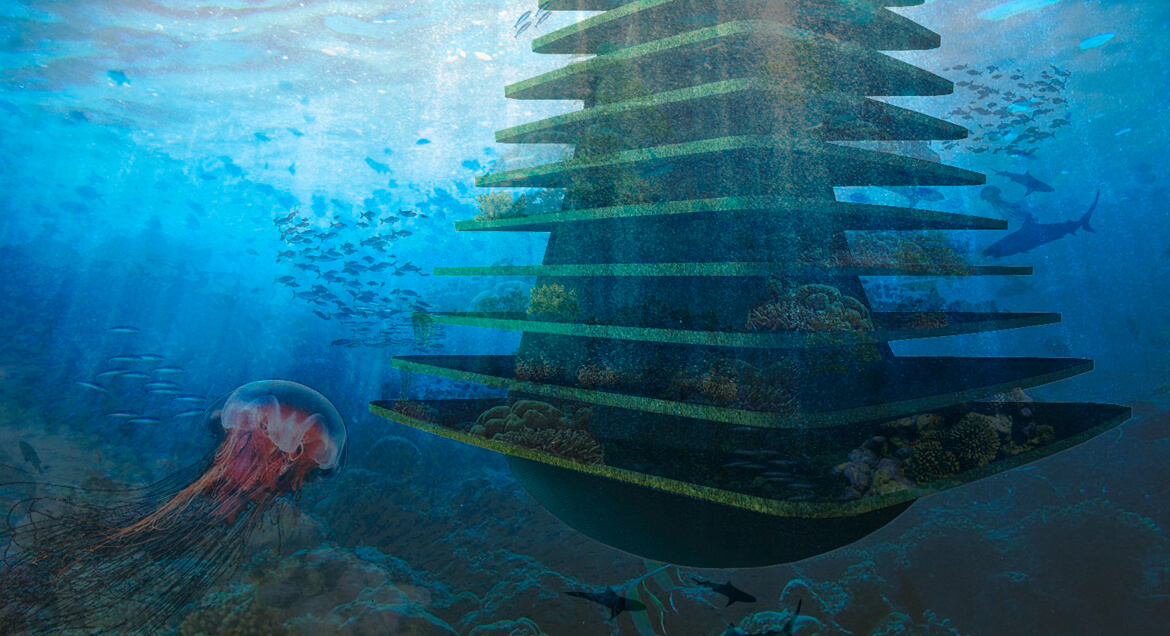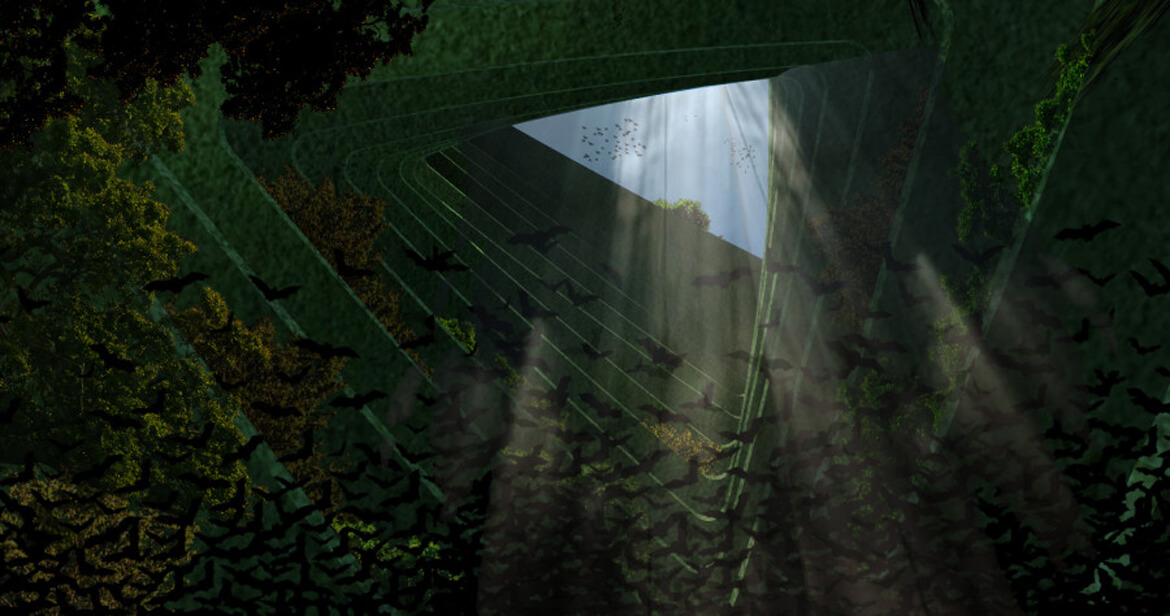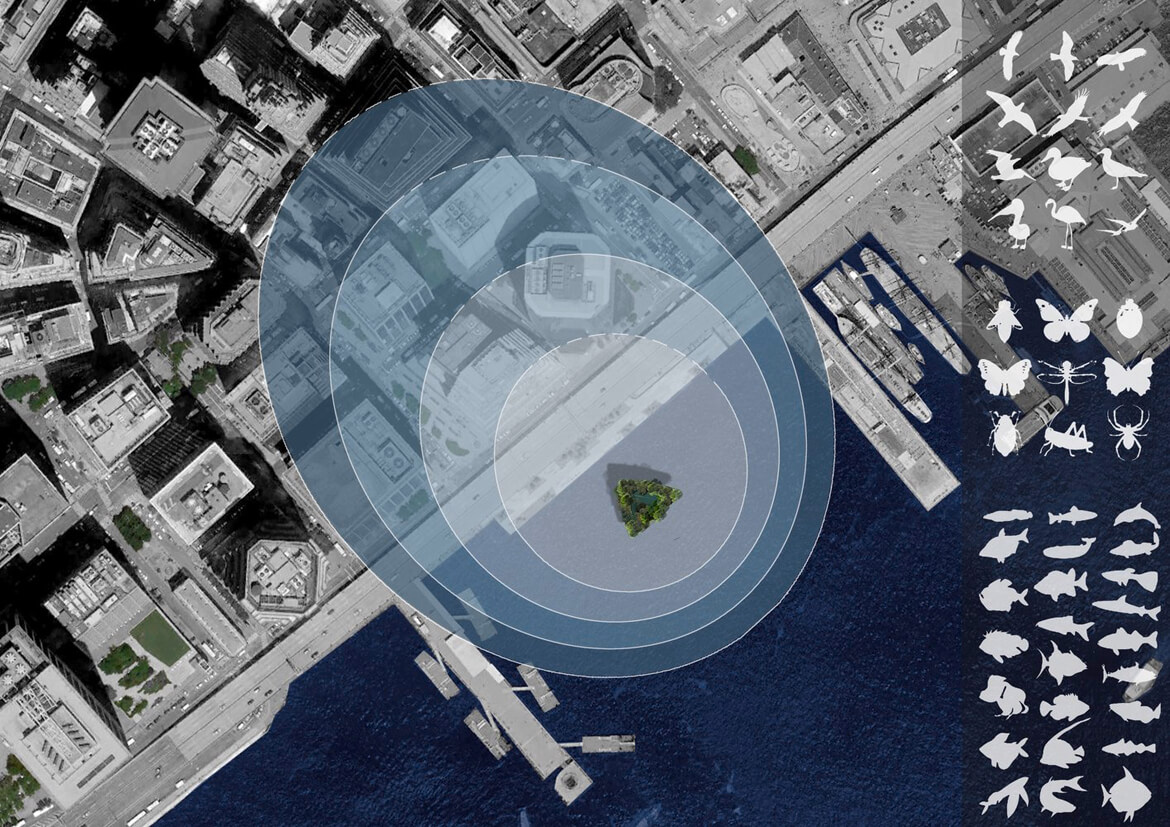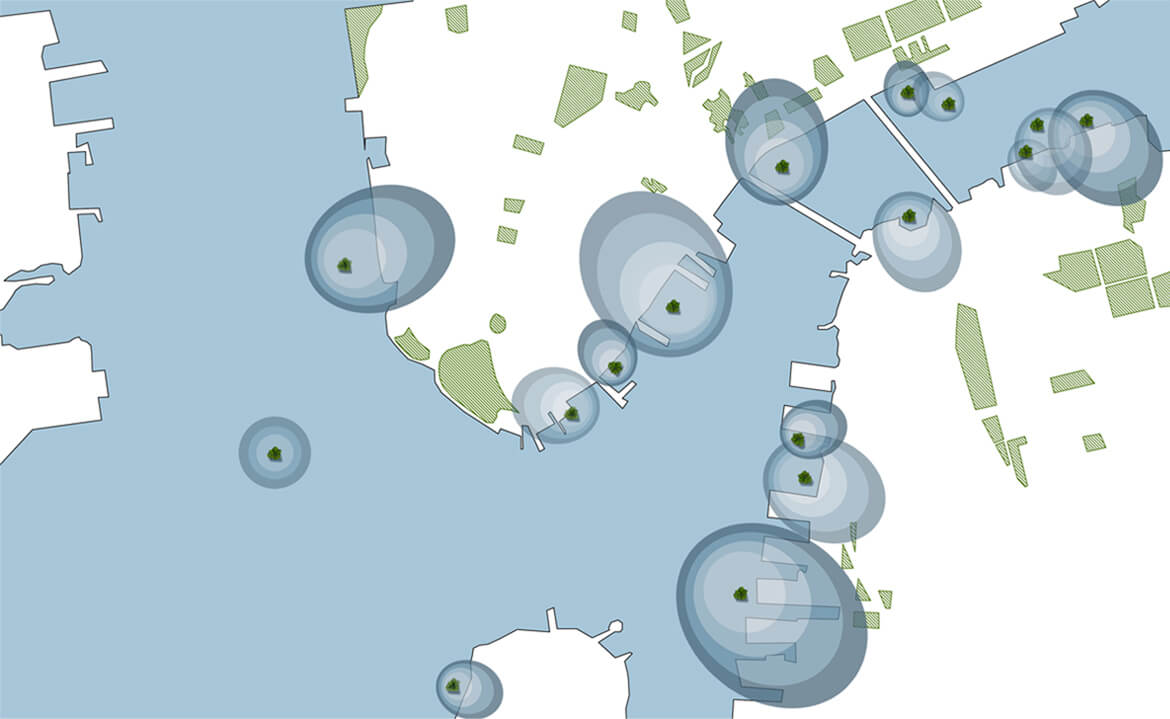
The skyscraper NATURE RESERVES: Architects hope to build £790,000 multi-storey habitats above and below water in cities
By Victoria Woollaston
Daily Mail
September.19.2014
With green spaces being replaced by building sites and large-scale developments around the world, architects are constantly looking for ways to replace them.
One such concept, devised by a team Dutch-based architects, uses towering structures built with layers of green space in which flora and fauna could live.
Called the Sea Tree, the structures would have space for birds and animals to live above ground, and would be bedded under the sea for fish and coral to inhabit.
‘Urbanisation and climate change put a lot of pressure on available space for nature in city centres,’ explained Waterstudio.
‘New initiatives for adding extra park zones to a city are rare.
‘Yet these kind of additional habitats for birds, bees, bats and other small animals could bring a lot of positive green effects to the environment of a city.’
Waterstudio’s concept is called the Sea Tree and it was designed to add high density, green spots to towns and cities.
According to designs, it would be a floating structure built using layers where animals and birds can live.
The structures would not accessible by man, and would be built using offshore technology and resources, similar to how oil storage towers are built and powered out at sea.
The idea is that large oil companies would donate a Sea Tree, and the trees could be built on rivers, seas, lakes and harbours.
The height and depth of the Sea Tree could also be adjusted depending on where it was placed.
To hold it in place, Waterstudio claims Sea Trees would be moored to the sea bed with a cable system.
Under the water, the Sea Tree would provide a habitat for small water creatures or, if the climate allowed for it, artificial coral reefs.
As well as providing a home for nature, the green structures could help reduce CO2 emissions produced by cities and towns.
‘The beauty of the design is that it provides a solution, and at the same time does not cost expensive space on land.
‘While the effect of the species living in the Sea Tree will affect a zone of several miles around the moored location.
‘For as we know, this floating tower will be the first floating object 100 per cent built and designed for flora and fauna.’
The firm said inspiration came from a project in Holland where ecologists asked them to provide habitats for animals which couldn’t be disturbed by people.
The cost for the Sea Tree design is estimated at €1 million (£786,100), and this would depend on water depth, mooring facilities and transport from construction site to the chosen city.
Further cost differences would depend on the preferred flora and fauna.
Waterstudio said it is in the process of finalising the location of the trees, and discussing costs with oil companies. Once these are complete, they will start construction.




